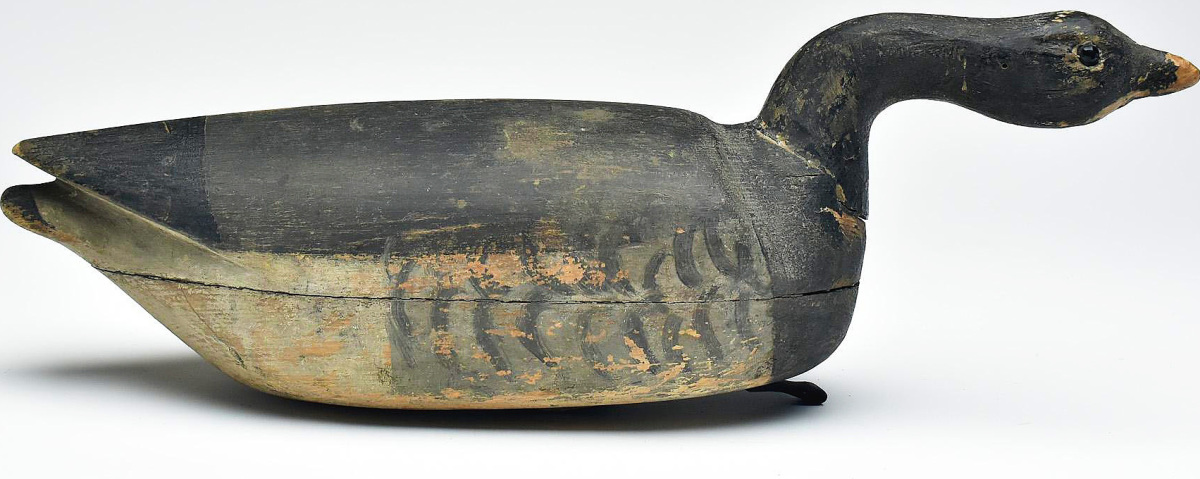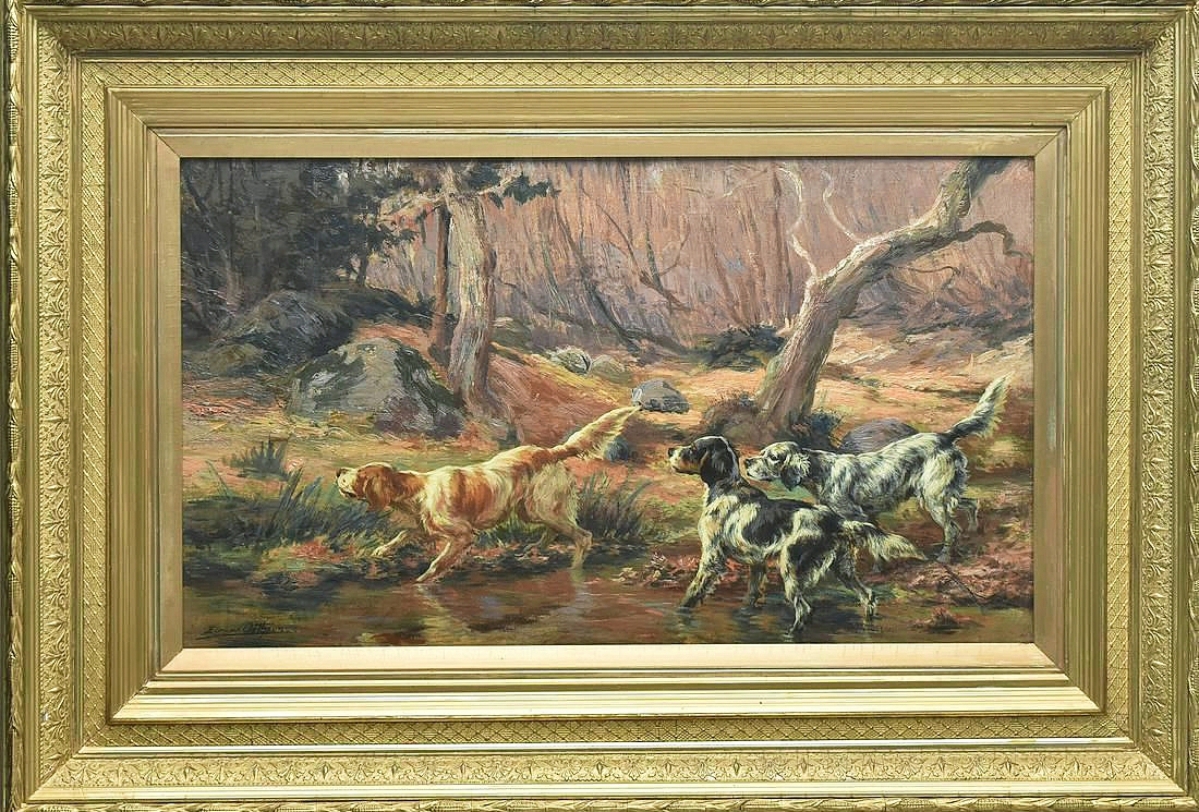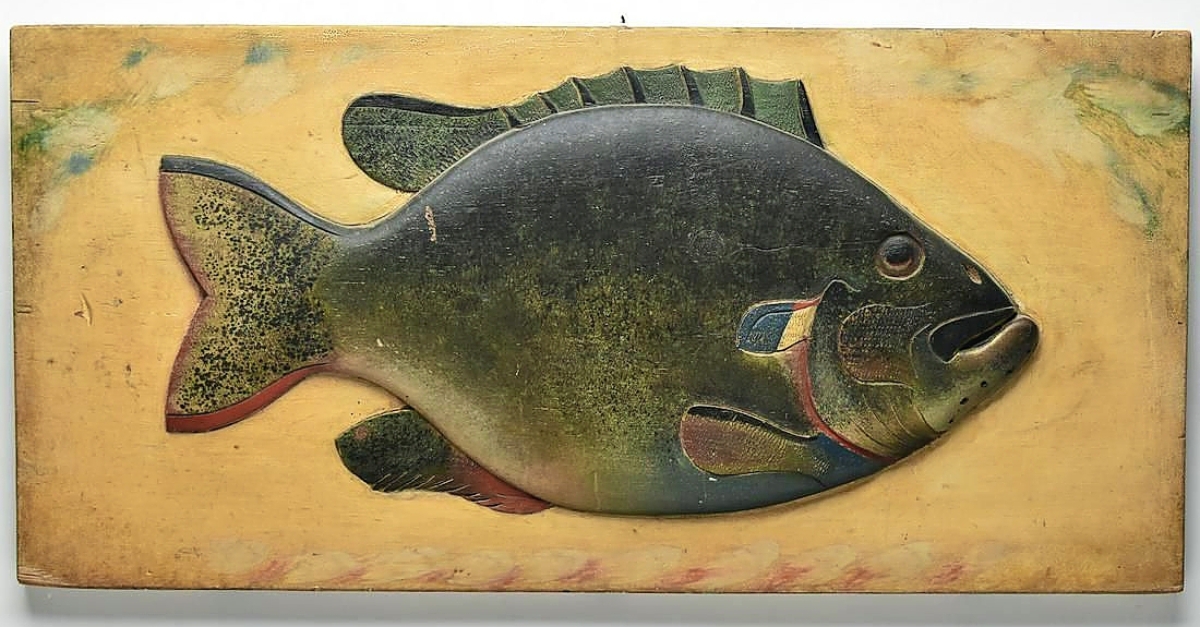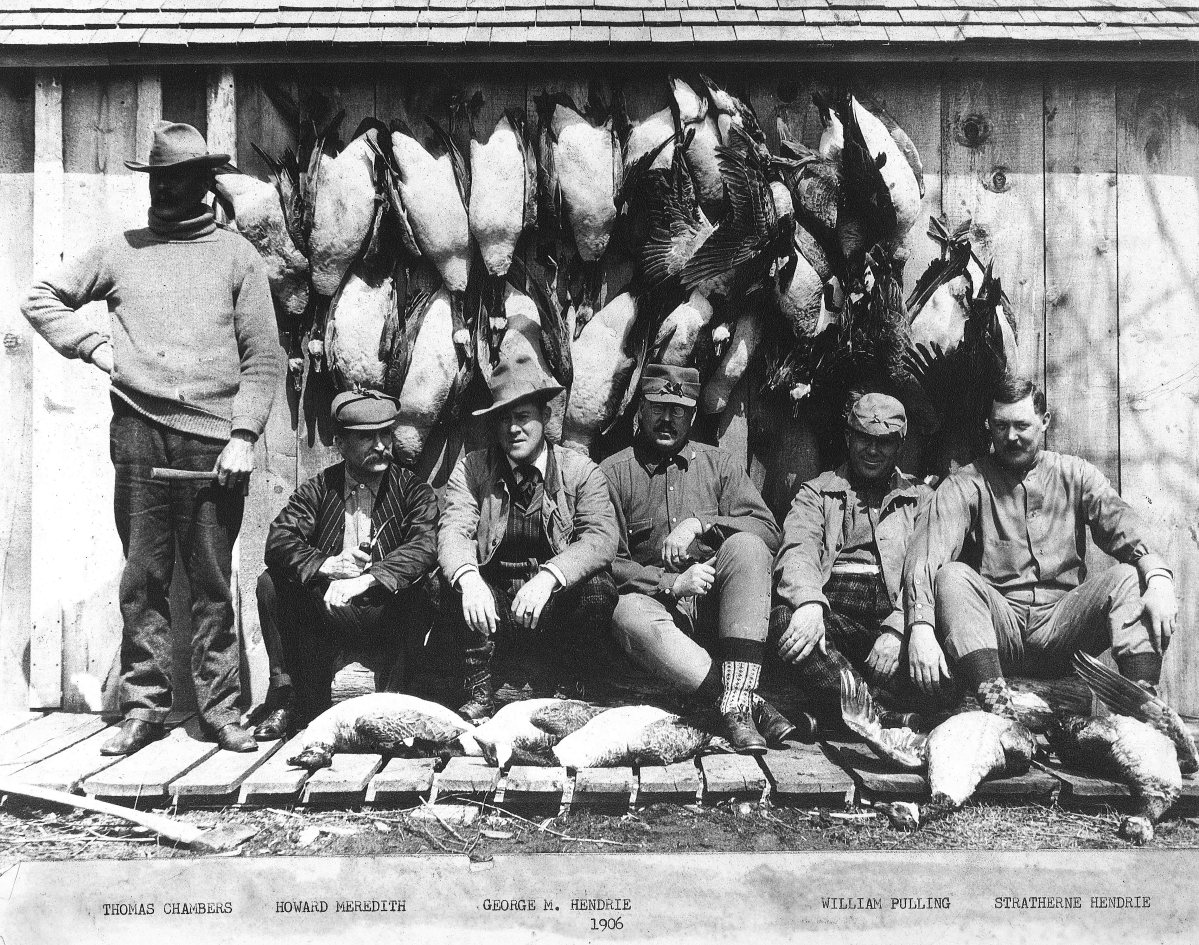
The highest priced decoy in the sale, selling for $252,000, was this brant made by Nathan Cobb Jr. It’s shown in a swimming pose and has an inlet neck and a split tail.
Review by Rick Russack, Photos Courtesy of Guyette & Deeter
ST MICHAELS, MD. – The Guyette & Deeter sale on July 29 and 30 at the Chesapeake Bay Maritime Museum, as one would expect, included decoys – both fish and fowl – miniatures and decorative carvings, sporting paintings and duck calls, but you might not have expected to see the folk art offerings or the Nantucket baskets. More than 70 lots sold for more than $10,000 each. Some of the highlights of the decoy selection were Virginia decoys, including a swimming brant by Nathan Cobb Jr, which was the star of the sale and the highest price for a decoy achieved this year, realizing $252,000.
A Thomas Brooks cigar store trade figure topped the folk art selection, finishing at $84,000. Many of the decoys in the sale would have fit well in folk art collections. Contemporary carvings included works by Frank Finney, William Gibian, Mark McNair and others. Sporting art included works by Edmund Henry Osthaus, with his oil painting of three setters leading the category at $69,000. There were works by Aiden Lasselle Ripley and others, while the numerous fish decoys included examples by Oscar Peterson and his contemporaries. Collectors had plenty from which to choose: more than 35 Crowell carvings, more than 60 fish decoys, more than 90 carvings from Virginia carvers – vintage and contemporary – almost 25 plovers, 25 Ward Brothers carvings, 17 Mason decoys, five swans, 30 paintings, three cigar store trade figures; the list could go on.
The live sale was conducted at the Chesapeake Bay Maritime Museum, with previews taking place at the nearby Guyette and Deeter office. Internet bidding was available on four platforms, and both absentee and phone bids were processed. The indexed, 350-page catalog is a reference work worth owning. It has numerous biographies of carvers, comments on regional decoys and several vintage photos of carvers, market gunners and sportsmen. Prior to starting the second day of the sale, Jon Deeter commented on the catalog, “We believe strongly in the importance of the catalog. An educated decoy collector is more likely to stay engaged longer.” Further, catalog descriptions are fully guaranteed. Fewer than a dozen lots of nearly 600 in the sale were passed.

The crowd in the salesroom bid actively, and behind them staff members were dealing with phone and internet bidders.
Most of the large selection of carvings by Virginia makers were sold on the first day and did well, including the highest priced decoy in the sale. Nathan Cobb Jr, who died in 1905, was a third-generation carver who lived on Cobb Island, off the Virginia coast where his family also operated a hotel. Appreciation for the quality and collectability of his work began with the publication of the first book on decoy collecting, Joel Barber’s 1934 Wild Fowl Decoys, and respect for his work remains high today. He worked with “found” materials, wood washed ashore on the island, and he used natural roots and branches for heads and necks. Brants were a desirable species, both for sport and the dinner table. His hollow swimming brant, dating to the last quarter of the Nineteenth Century sold for $252,000. It had a carved E on the base, indicating that it was from the rig of Elkanah Cobb, Nathan’s son. The decoy remained in the Cobb family until Guyette and Schmidt sold it in 2004. A hollow carved black duck by the same maker earned $15,600. It had cost a previous owner $1,000 in 1976.
Other Virginia decoys included a rare pintail drake with relief wingtip carving by Dave “Umbrella” Watson, which sold for $70,800, one of the highest prices of the sale. The nickname stems from the fact that Watson always carried an umbrella. There were also distinctive shorebird decoys from Virginia. Most sought-after was a folky, large and plump curlew made by Eli Doughty, Hog Island, Va., which earned $56,400. Another Virginia shorebird, a late Nineteenth Century running plover by Robert Andrews, Smith Island, Va., realized $22,800.
Shorebirds, in general, brought strong prices. In addition to those mentioned above, an outstanding golden plover from the third quarter of the Nineteenth Century by an unknown Nantucket carver brought one of the sale’s higher prices, $75,000. It was hollow-carved and displayed split tail carving and glass eyes. A circa 1900 black-bellied plover in emerging plumage by John Dilley, Quogue, Long Island, N.Y., reached $36,000. Another outstanding, eye-catching Long Island decoy by Captain Al Ketchem, perhaps not truly a shorebird, was a large Nineteenth Century blue heron, which brought $37,200. It had a three-piece body, long neck and glass eyes.

Selling for $69,600 was a painting of three setters in a wooded landscape by Edmund Henry Osthaus. It was the top seller of the sporting art offerings.
Collectors actively bid for a selection of decoys by Illinois carvers. A hollow-carved blue wing teal drake with a slightly turned head by Charles Perdew sold for $25,800. A hollow-carved mallard drake by the same maker earned $14,400. A rig-mate pair of hollow-carved mallards by Bert Graves reached $24,000, and a pintail drake by the same carver earned $4,200.
The sale started off with a selection of Twentieth Century decorative carvings, including a ruffed grouse by the Ward Brothers of Crisfield, Md. With raised and fanned wings, it was signed and dated 1969. Only five are believed to have been made, and this one sold for $22,800. Other Ward Brothers decorative examples included a preening pintail drake with relief carved wings and tucked head, which realized $8,400 A preening blue wing teal by Jim Schmiedlin, Bradford Woods, Penn., earned $24,000. A hollow-carved Fulvous tree duck by the same maker sold for $6,000. There were several outstanding carvings by William Gibian, a Virginia carver born in 1946. A pair of hollow-carved pintails with raised wings brought $6,000, and a wing-up preening lapwing plover, with inset metal feathers, brought $4,500. His passenger pigeon with raised wing tips and relief feather carving sold for $1,560.

The most expensive of the Oscar Peterson carvings was this 32-inch-long bluegill plaque. It was carved with detailed gills and fins and realized $51,000.
The second day included 30 carvings and paintings by Frank Finney, Cape Charles, Va., who was born in 1947. A full-sized owl, 24 inches tall, with field mouse gripped in its talons, sold for $16,800. A large oil painting by Finney, one of three in the sale, depicting a hunting scene with a sinkbox and a variety of wildfowl brought $20,400, more than triple the estimate.
Other sporting art was topped by an oil on canvas by Edmund Henry Osthaus (1858-1928). It was the subject of a lengthy bidding contest between two determined phone bidders. Osthaus was one of the finest painters of dogs in the United States, with works in several museums. Selling for $69,600 was his painting of three setters in a wooded landscape. His watercolor of a setter named “Jeff” brought $15,600. A watercolor by another popular sporting artist, Aiden Lassell Ripley (1896-1969), “Geese at Currituck” depicting goose hunting at Currituck, N.C., realized $45,000.
Guyette & Deeter’s last few sales have included extensive offerings of fish decoys and this sale did as well. Oscar Peterson of Cadillac, Mich., working in the second quarter of the Twentieth Century, is the acknowledged master of fish carvings. In addition to decoys, he also produced decorative plaques, and one of these, with a bluegill over 24 inches long on a 32-inch background, reached $51,000. From time to time, he also carved other animals, and an unusual polliwog, one of only four he is known to have made, earned $28,800. As Peterson’s story is told, he often traded his carvings for whiskey at a bar in his hometown.

Tom Chambers was a decoy carver and hunter from Toronto, Canada. He’s on the far left in this photo, which shows some of the birds taken in one day’s hunting with some friends who are identified at the bottom of the photo.
A recent Guyette & Deeter sale included a cigar store trade figure and it did well. This sale included three from the collection of Mark Goldman, who began collecting in 1967 and owns more than 100 tobacco trade figures. Additional carvings from his collection will be sold in future sales. A figure of a Native American chief attributed to Thomas Brooks, New York City, made in the third-quarter Nineteenth Century, realized $84,000. One hand, holding seven cigars, was extended from the body, and the other hand held a percussion rifle. The chief wore a large feather headdress. The surface was restored and there were minor condition issues. A 49-inch Native American maiden from the same collection, this one attributed to Samuel Robb, brought $39,000. She wore a headdress and held a sheaf of tobacco leaves.
The day after the sale, Jon Deeter said, “It really worked well. The Chesapeake Bay Maritime Museum is right on the water, so folks attending the sale could enjoy our complimentary lunch on the dock and they could take a break from the auction, enjoy the museum, enjoy the setting and chat with friends old and new. The sale grossed more than $3.3 million, just a bit short of our high estimate, included the highest price for decoy sold so far this year and we had a great turnout. It’s turning out to be a good year for us. So far, our cataloged sales have grossed more than $6.75 million and our weekly online decoy sales are on track to gross around $2 million for the year. We’re looking forward to the first sale in February of our new firearms division. We’ll be specializing in sporting arms, mostly double barrel and over/under shotguns. There won’t be any military-type weapons. Josh Lowenstein will be heading that division. He’s well known in the field, and we expect the February sale will have some great stuff. I’m really pleased with the way things are going this year and I’m looking forward to next year.”
Prices given include the buyer’s premium as stated by the auction house. For information, www.guyetteanddeeter.com or 410-745-0485.













































